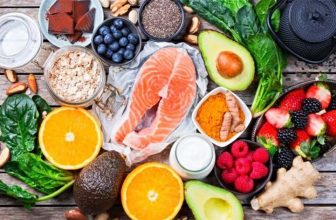
Most of the readers here may be familiar with the words “probiotics” and “prebiotics” and are also aware of the health benefits towards the well-being of the gut. However, have we really understood exactly what they are and the differences between them?
There are several blogs and articles on the internet regarding this topic, however it is complicated to determine what is precise and reliable information. Thus, we have put together a summary guide for you on what they are, food sources for both and the recommended intake amounts. Check out Probiotics vs Prebiotics: What’s the Difference?
Probiotics
These are live strains of strictly selected microorganisms which, when administered in adequate amounts, confer a health benefit on the host (the consumer). These microbes tend to be lactobacillus (major part of the lactic acid bacteria group) and bifidobacteria.
According to Harvard Women’s Health Watch, the recommended dose is between 1-10 billion Colony-Forming Units (CFU) daily for several days per week.
Probiotics must be taken regularly in order to have an impact on the microbiome in the gastrointestinal tract. Sources of probiotics can be from dairy products (e.g. yogurts, yogurt drinks and cottage cheese), dietary supplements, and fermented foods (eg. kimchi, sauerkraut, miso, kombucha etc). Each different brand and food may differ in terms of bacteria strains and dosage due to production methods.
To give you a general idea of how much CFU is in each product, here is a list:
- Kefir: 27.7 billion CFU per 1 cup serving
- Yogurt: 3.6 billion CFU per 1 cup serving
- Kimchi: 2.6 billion CFU per 1/2 cup serving
- Sauerkraut: 195.2 million CFU per 1/2 cup serving
- Kombucha: 23.1 million CFU per 1 cup serving
- Miso: 54.1 thousand CFU per 1 tbsp serving
This information was generated through an experiment conducted by Dr. Brendan Chapman, a professor in the department of Food Science Technology at Centennial College in Toronto, Canada. Nevertheless, if still in doubt, check the label for an indication of the probiotics present in the product when purchasing.
Prebiotics
A selectively fermented ingredient that allows specific changes, both in the composition and/or activity in the gastrointestinal microflora, that confer benefits.
Essentially, they are types of dietary fibre that feed beneficial bacteria in the gut. However, do note that although all prebiotics are fibre, not all fibre is prebiotic.
So, it is a bit more complicated than probiotics to determine what prebiotics are exactly. The most common prebiotics are fructo-oligosaccharides, galacto-oligosaccharides, and trans-galacto-oligosaccharides. However, for simplicity’s sake, we are just going to refer to them as dietary fibres.
According to the British Nutrition Foundation, the recommended average intake for adults is 30g per day but on average, only about 18g is actually consumed per day. Natural sources of dietary fibre are fruits, vegetables, nuts and cereals. Though some people would avoid these because if there is a large increase in the amount of fibre in the diet, some experience bloating, discomfort and wind/gas. However, it is natural as the large intestine and gut bacteria will gradually adapt, and symptoms usually decrease.
The following is a list of foods with the fibre content to give you an idea of how much consumption is needed:
- 2 thick slices of wholemeal bread: 6.5g fibre
- 1 banana: 1.4g fibre
- 200g of baked beans in tomato sauce: 9.8g fibre
- 1 baked potato with skin: 2.6g fibre
- 1 cup of brown rice: 3.5g fibre
- 100g of broccoli: 2.6g fibre
- 30g of nuts (ie. 20 almonds): 3g fibre
Another method to reach the recommended level is to have “5 portions a day”. A portion can be measured as 1 medium-sized fruit, 3 heaped tablespoons of vegetables or beans or pulses.









